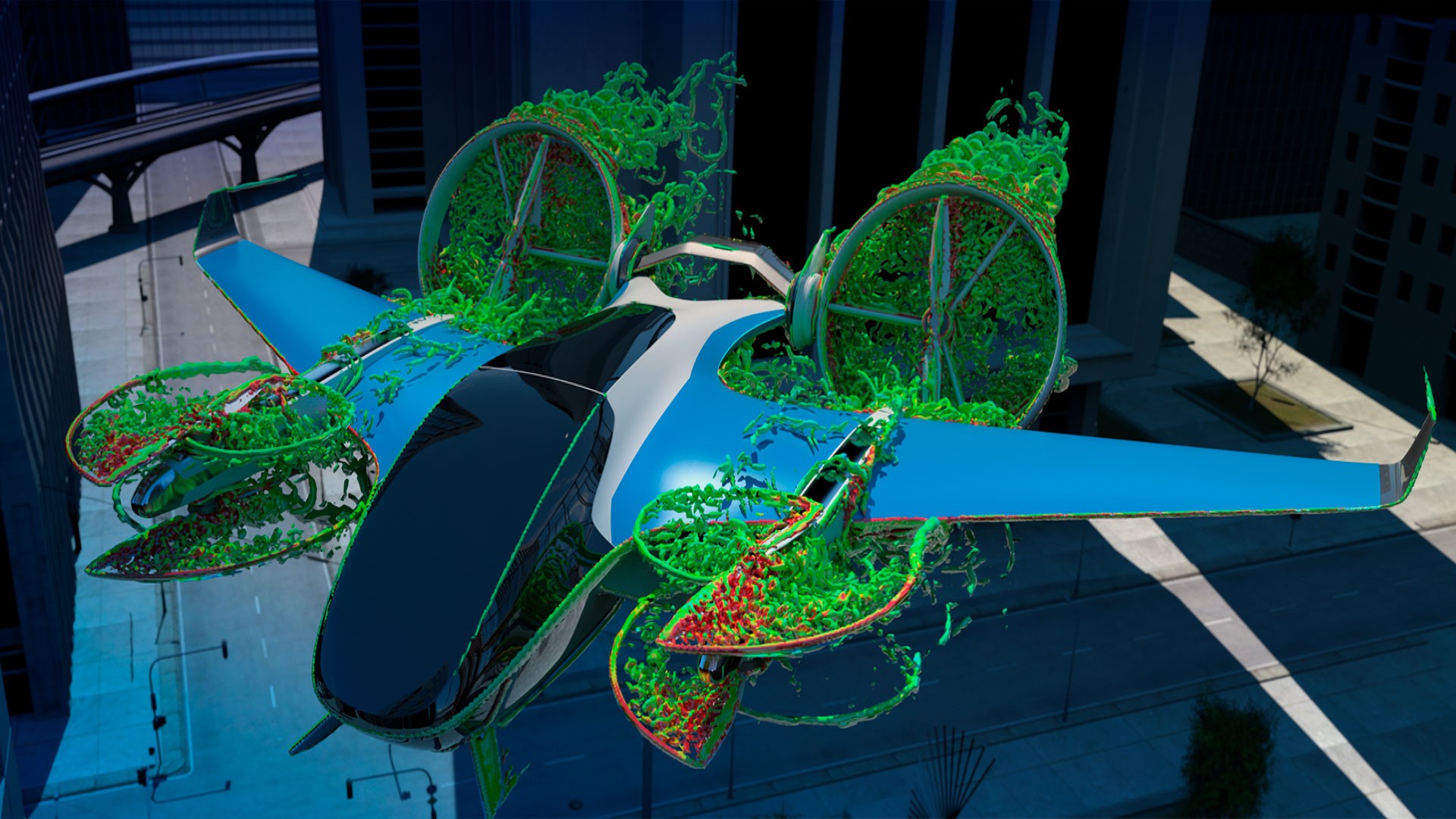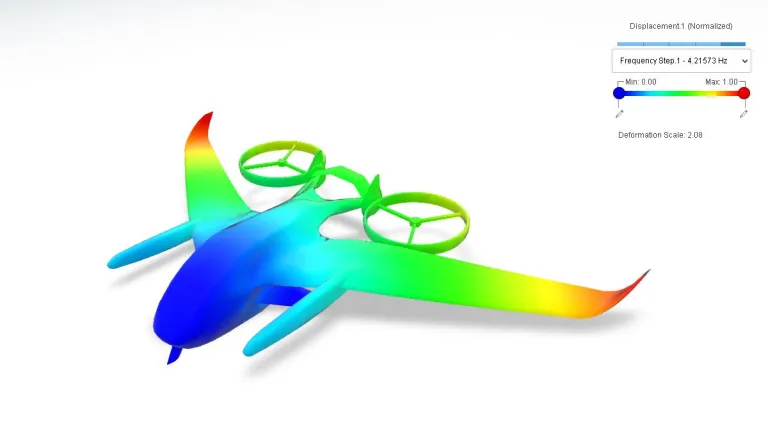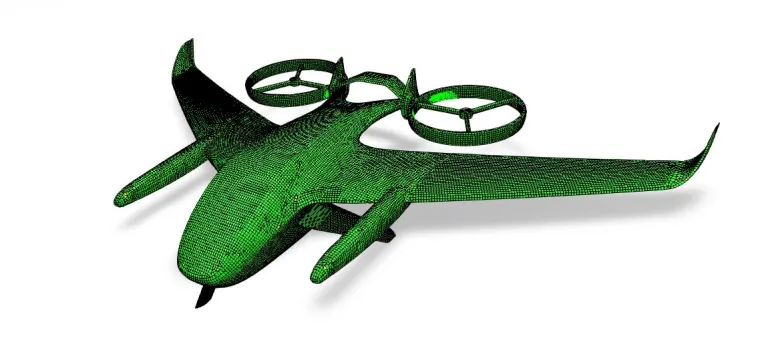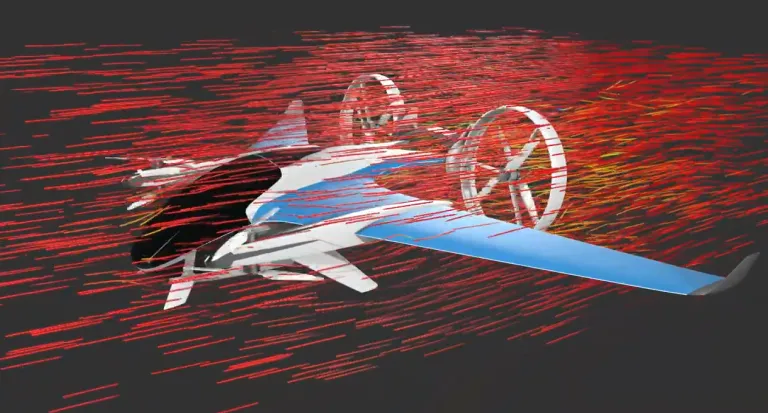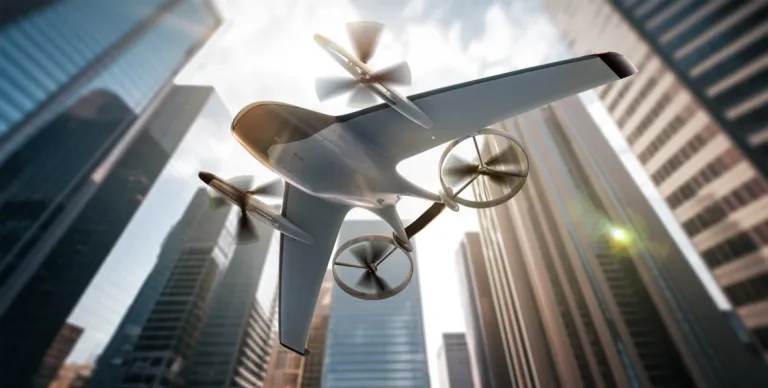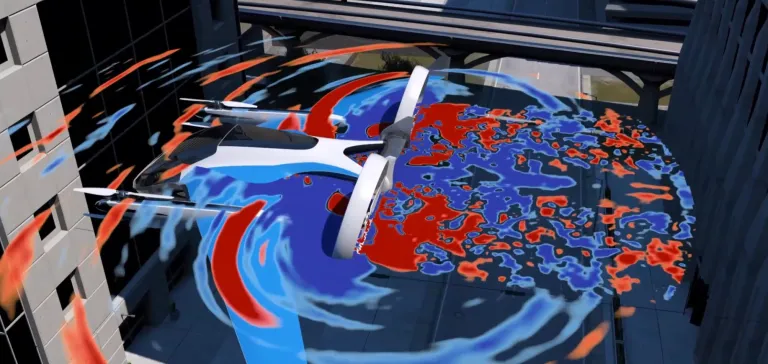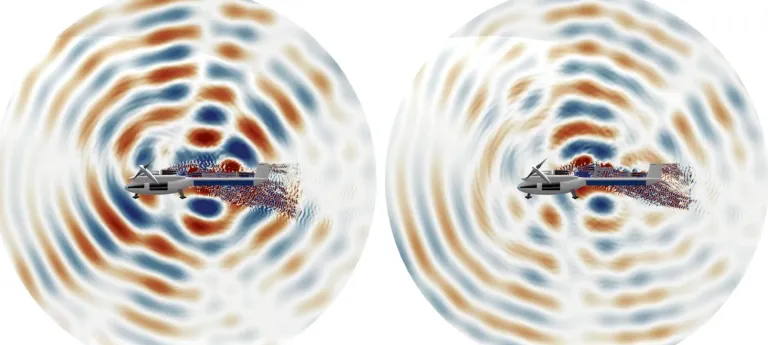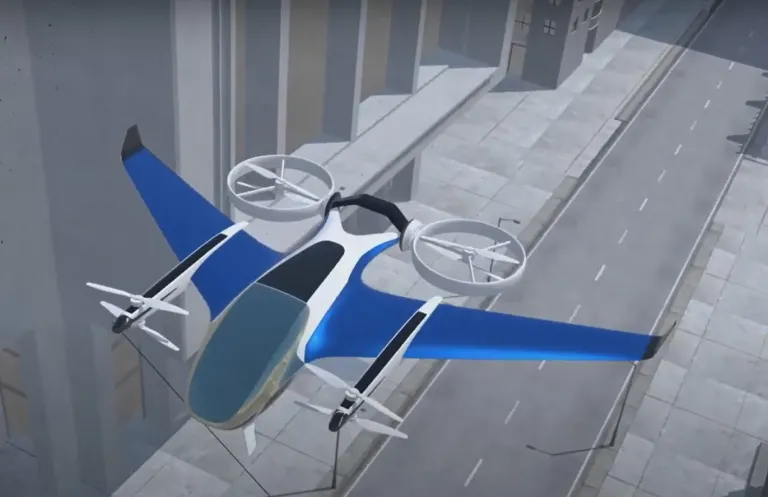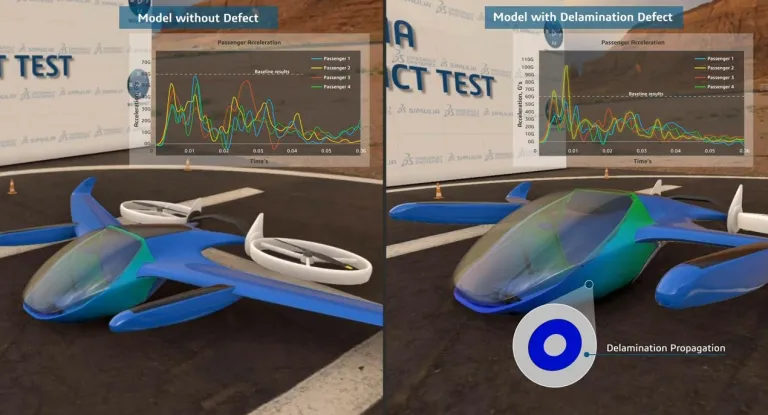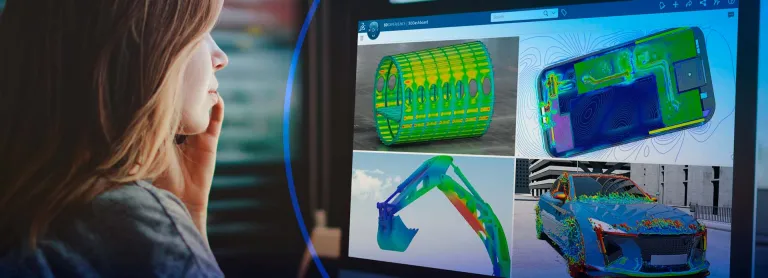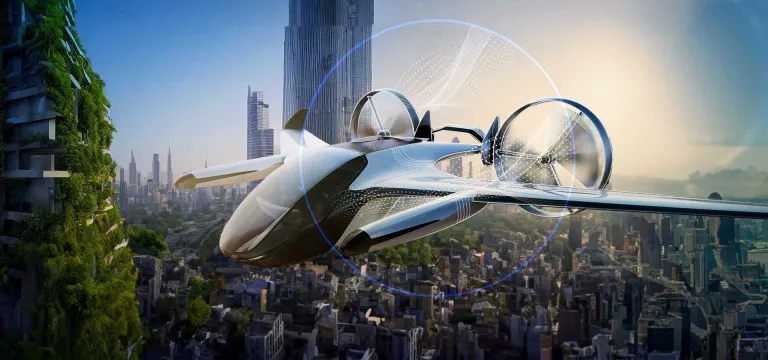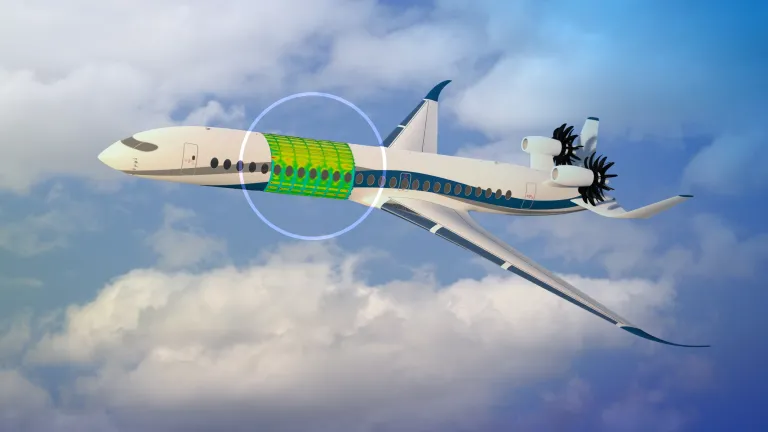eVTOL Design and Simulation
Simulation for Urban Air Mobility (UAM)
Safe, Quiet, and Efficient eVTOL Aircraft Design with 3DEXPERIENCE Platform
As the world's urbanized population continues to surge, the looming challenge of traffic congestion is poised to become increasingly prominent in the years ahead. Urban air mobility promises to be an integral part of the future of transportation. Low emissions, safe and quiet, Electric Vertical Take-Off and Landing (eVTOL) vehicles present an efficient and environmentally conscious solution to this problem.
Multiple companies have begun developing various diverse solutions. As the first products get to market and certification matures, the commercial opportunities in this segment are starting to be realized, and the competition for widespread adoption ushers a new era in urban air mobility.
The eVTOL market presents its fair share of challenges in all the engineering phases, from requirements to architectural and conceptual evaluation, system modeling, engineering, testing, and certification. Depending on the targeted market for each offering, the extent of that milestone can be substantial. However, there is apparent pressure to be first on the market with innovative products.
Dassault Systèmes, with over 40 years of experience in aerospace technology, provides specialized solutions to support eVTOL makers throughout this journey, from gathering all requirements’ sources to validation and verification for certification. These eVTOL design and simulation solutions capture all aspects of business operation on a single environment, the 3DEXPERIENCE platform.
In the following sections, we will cover:
- How the MODSIM approach helps to drive better decision-making in the preliminary design stage by merging CAD with simulation
- How SIMULIA Fluids solvers provide tools for designing, evaluating and optimizing the aerodynamics and aeroacoustics characteristics.
- How the very pivotal Battery technology development benefits from a range of solutions for Chemistry Modeling, Battery Cell Engineering, and Module and Pack engineering.
- Finally, How specific certification scenarios can be simulated and how simulation can replace tests. The Structure and Emag capabilities allow validation of models for bird-strike and lightning-strike scenarios to ensure operability over real-world- conditions and certification viability.
Conceptual Design and Optimization of an eVTOL
To stay ahead in this emerging industry, eVTOL manufacturers need new tools and methods to streamline and accelerate the design process. A critical aspect is the efficiency and connectivity of such engineering tools that enable teams to collaborate, quickly explore design alternatives, and validate their feasibility from the early stages of development. The 3DEXPERIENCE platform supports preliminary design engineers with high-end parametric CAD capabilities, cross-discipline modeling and simulation, and leading optimization technologies, all tightly integrated in a single, easy-to-use environment.
- Conceptual Sizing Optimization for Urban Air Mobility
- Conceptual Design and Evaluation of Airframe Structure
Conceptual Sizing Optimization for Urban Air Mobility
The Conceptual Sizing Optimization for Urban Air Mobility presentation introduces a novel conceptual sizing optimization workflow for an eVTOL design with the 3DEXPERIENCE platform. The process includes creating a parametric design and performing multi-physics simulations within the same interface. Combining parametric and non-parametric optimization determines the lightest, structurally feasible design.
Conceptual Design and Evaluation of Airframe Structure
The Conceptual Design and Evaluation of Airframe Structure presentation displays the power of CATIA SFE to create parametric concept models of structural components before CAD design is finalized. The key value resides in the flexibility to make structural design iteration easy. These models are further used to support multidisciplinary optimization, including critical load and crashworthiness scenarios.
eVTOL Aerodynamics & Propulsion
Most eVTOL concepts rely on distributed electric propulsion. The multiple motors increase redundancy, improve safety features, and reduce maintenance requirements. By strategically placing the propulsion system over lifting surfaces, complex aerodynamic flow features can be harnessed to increase lift and reduce drag. The typically higher number of rotors also reduces noise generation through lower tip speed and disc loading. In this distributed propulsion paradigm, SIMULIA PowerFLOW plays a pivotal role, enabling the analysis of the full vehicle's multiple flight and operation conditions early in the design process, leading to the industry solution- Winning Concept.
Rotorcraft Aerodynamics and Aeroacoustics Predictions
How does one improve aerodynamic characteristics while minimizing generated noise? What is the relation between flight path and community noise? What are the fundamental mechanisms of rotor noise generation, and how can these be addressed for improved aeroacoustic performance?
Read these papers from Delft University that have used the Lattice-Boltzmann-based solver SIMULIA PowerFLOW to research these topics and provide insight into these questions.
eVTOL Noise Analysis
For eVTOL to enjoy widespread use, their noise footprint must blend in with urban background noise, which is a considerably low level for an aircraft. The design phase must, therefore, consider noise generation and community noise levels from early on. Both broadband and tonal noise must be considered, and the multiple noise generation mechanisms must be examined. The nature of eVTOL flight transitions also creates challenges in minimizing emitted noise from blade tip vortex interactions. With SIMULIA PowerFLOW, transient flow simulation enables you to predict all these phenomena as early as the preliminary design phase.
- Acoustic Analysis for Urban Air Operations
- Flow Confinement Effects on UAV Rotor Noise
Acoustic Analysis for Urban Air Operations
To develop and certify eVTOL vehicles for urban operation, low-noise take-off and landing procedures, optimal vertiport positions, and flight corridors must be identified.
Significant research on Community Noise of Urban Air Transportation Vehicles has been conducted to develop computational workflows for evaluating the acoustic impact of an eVTOL flight path. High-fidelity flow simulation results are combined with far-field noise computations for candidate flight paths. This allows ground-level perceived noise to be optimized for several operational variables.
A further proof-of-concept study, Aeroacoustic Analysis of Urban Air Operations using the LB/VLES Method, showcases the feasibility of the numerical assessment method for vehicles operated in populated urban areas. It analyzes the effects of sound scattering due to the presence of buildings.
Flow Confinement Effects on UAV Rotor Noise
Rotor design plays a crucial role in the overall aeroacoustic characteristics of the vehicle. The traditional method of testing isolated rotors in anechoic chambers is still used extensively. Still, it has been demonstrated in the Numerical and Experimental Investigation of Flow Confinement Effects on UAV Rotor Noise that significant testing bias can be present from this methodology. Furthermore, the data from these tests can be very useful for validation but are lacking for design purposes. Using SIMULIA PowerFLOW, the rotor can be simulated in isolated and integrated cases for various tests and real-world conditions. These simulations provide the designers and engineers with extremely useful data on aerodynamics and aeroacoustics, which can be leveraged to iterate designs for more efficient and quieter rotors.
eVTOL Battery Simulation
Electric power storage is a core technology for the eVTOL segment, as most programs leverage electrical engines as propulsion. Batteries are the most popular source of power for eVTOL vehicles. The primary challenge with batteries is achieving good specific power densities to support vertical flight and increase aircraft range. Battery optimization, thermal management, safety, reliability, aging, and battery behavior across all scales and physics are continuous engineering concerns at eVTOL makers. Dassault Systèmes provides solutions for analysis and simulation of systems and physics simulations. Battery simulation gives insight into diffusion, electric, chemical, mechanical, and thermal behavior. Simulation can consider all scales from the molecular level through individual cells, packs and modules for best system performance and safety at the vehicle level.
eVTOL Safety Simulation
Safety is critical to Urban Air Mobility, and passenger and community safety must be assured. eVTOL vehicles use new technologies such as distributed electric propulsion, fly-by-wire, batteries, and carbon fiber. These new technologies must be understood at a single component level and as a whole system. Critical scenarios such as Strategy for Bird Strike Simulations Using Abaqus/Explicit, Protecting Buildings against Lightning Strike and EMP: Electromagnetic Simulation can Help, emergency landing, fly-in city turbulence, Thermal Runaway in Cylindrical Batteries, power shutdown and icing conditions can be mitigated with simulation. With the 3DEXPERIENCE platform, analysis can replace some costly tests, thus speeding up the process.
eVTOL Safety Simulation Articles
Start Your Journey
The world of eVTOL Design and Simulation is changing. Discover how to stay a step ahead with SIMULIA
FAQs About eVTOL Design and Simulation
Also Discover
Learn What SIMULIA Can Do for You
Speak with a SIMULIA expert to learn how our solutions enable seamless collaboration and sustainable innovation at organizations of every size.
Get Started
Courses and classes are available for students, academia, professionals and companies. Find the right SIMULIA training for you.
Get Help
Find information on software & hardware certification, software downloads, user documentation, support contact and services offering
